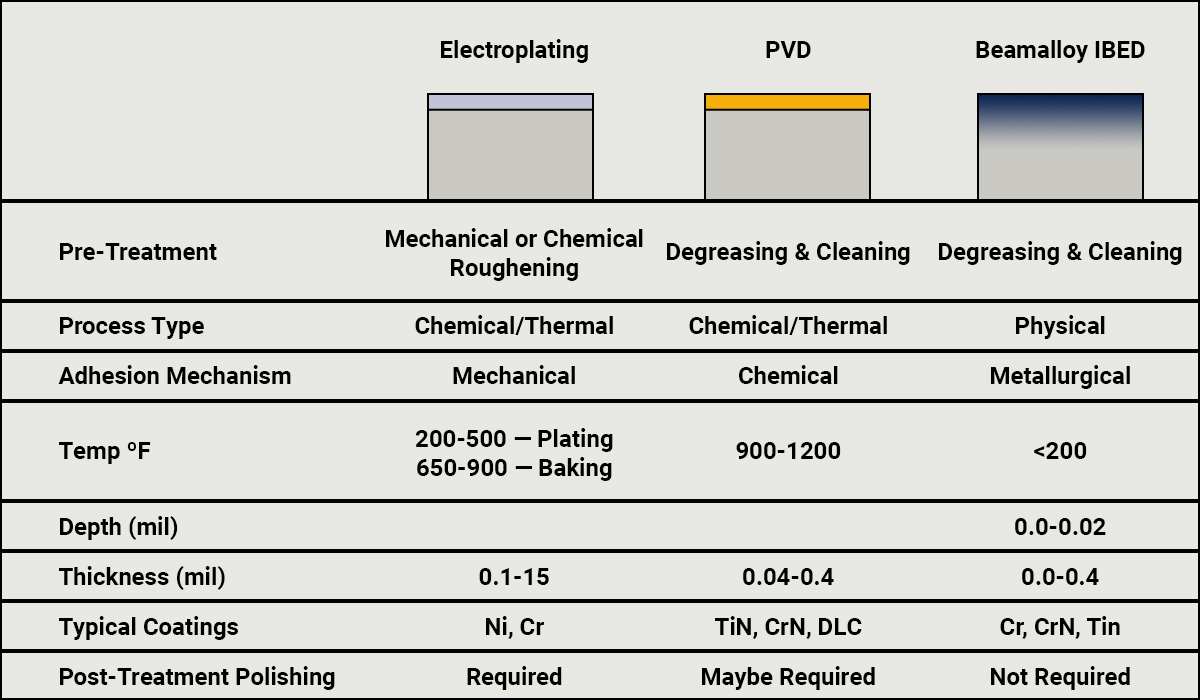Of the many coating processes in the industrial marketplace, the three that have been commonly used for pharmaceutical tooling (punches, dies, tamping pins, dosators, …) are chemical electroplating, physical vapor deposition (PVD), and ion beam enhanced deposition (IBED). All of the various coatings available are deposited by one of these three basic processes. Choice of the correct coating, and the correct coating process, are the keys to success in obtaining improved performance for pharmaceutical tooling.
Metallic coatings such as nickel (Ni) and chromium (Cr) are deposited by electroplating. Boron (B), and Teflon™ (PTFE), can be added to enhance coating hardness, and coating lubricity, respectively. Processing temperatures during plating are below 200 °F, but the coated tool must be baked post-plating at higher temperatures (375 °F) to prevent hydrogen embrittlement (Cr), or at temperatures between 650°F and 900°F to achieve full hardness (Ni).
Hard refractory nitride coatings such as titanium nitride (TiN) and chromium nitride (CrN), and diamond-like carbon (DLC) coatings are commonly deposited by physical vapor deposition (PVD) processes. In order to insure good adhesion and optimum coating properties, the PVD processing temperature must be at least 900°F. At these temperatures the bulk tool material will soften and precision dimensions will distort.

These nitride hard coatings, and metallic coatings, can also be deposited using the patented low-temperature ion beam enhanced deposition (IBED) process. Coating temperature does not exceed 200 °F, which is low enough to eliminate the danger of dimensional distortion or bulk softening of the tool. Coating adhesion is guaranteed by first forming a layer within the surface of the tool, and then growing the coating out from this case layer.
Maintenance of the pre-coated surface finish is also important to consider when choosing a coating and coating process. Electroplated and PVD coatings grow with large crystalline grain structures. This degrades the original surface finish of the tool and requires that the surface be re-polished after coating. IBED coatings are nanocrystalline in nature and replicate the surface finish precisely, eliminating the need for post-coating re-polishing.
